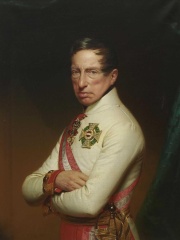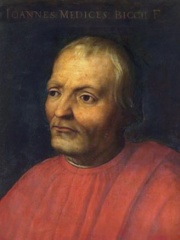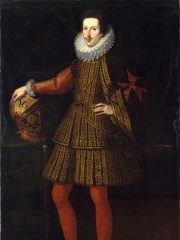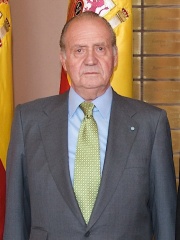
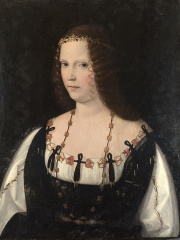
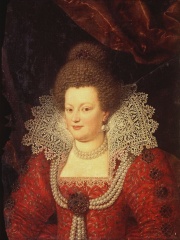
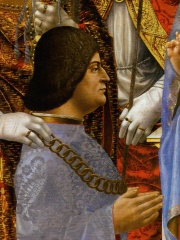
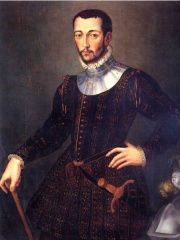
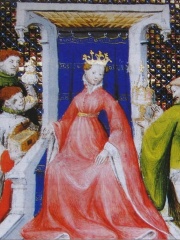
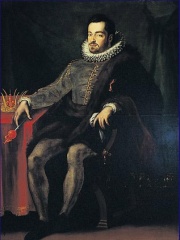
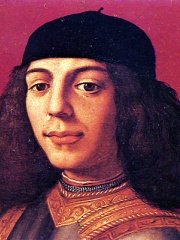
The Most Famous
NOBLEMEN from Italy
Top 10
The following people are considered by Pantheon to be the top 10 most legendary Italian Noblemen of all time. This list of famous Italian Noblemen is sorted by HPI (Historical Popularity Index), a metric that aggregates information on a biography's online popularity. Visit the rankings page to view the entire list of Italian Noblemen.

1. Juan Carlos I of Spain (b. 1938)
With an HPI of 84.83, Juan Carlos I of Spain is the most famous Italian Nobleman. His biography has been translated into 109 different languages on wikipedia.
Juan Carlos I (Spanish: [xwaŋˈkaɾlos]; born Juan Carlos Alfonso Víctor María de Borbón y Borbón-Dos Sicilias, 5 January 1938) is a member of the Spanish royal family who reigned as King of Spain from 22 November 1975 until his abdication on 19 June 2014. In Spain, since his abdication, Juan Carlos has usually been referred to as the rey emérito ('king emeritus') by the press. Juan Carlos is the son of Infante Juan, Count of Barcelona, and grandson of Alfonso XIII, the last king of Spain before the abolition of the monarchy in 1931 and the subsequent declaration of the Second Spanish Republic. Juan Carlos was born in Rome, Italy, during his family's exile. General Francisco Franco took over the government of Spain after his victory in the Spanish Civil War in 1939, yet in 1947 Spain's status as a monarchy was affirmed and a law was passed allowing Franco to choose his successor. Juan Carlos's father assumed his claims to the throne after King Alfonso XIII died in February 1941. However, Franco saw Juan Carlos's father to be too liberal and in 1969 declared Juan Carlos his successor as head of state. Juan Carlos spent his early years in Italy and came to Spain in 1947 to continue his studies. After completing his secondary education in 1955, he began his military training and entered the General Military Academy at Zaragoza. Later, he attended the Naval Military Academy and the General Academy of the Air, and finished his tertiary education at the University of Madrid. In 1962, Juan Carlos married Princess Sophia of Greece and Denmark in Athens. The couple have three children: Elena, Cristina, and Felipe. Due to Franco's advanced age and declining health amid his struggle with Parkinson's disease, Juan Carlos first began periodically acting as Spain's head of state in the summer of 1974. In November the following year, Franco died and Juan Carlos became king. Juan Carlos was expected to continue Franco's legacy, but instead introduced reforms to dismantle the Francoist regime and to begin the Spanish transition to democracy soon after his accession. This led to the approval of the Spanish Constitution of 1978 in a referendum which re-established a constitutional monarchy. In 1981, Juan Carlos played a major role in preventing a coup that attempted to revert to Francoist government in the King's name. In 2008, he was considered the most popular leader across all Ibero-America. Hailed for his role in Spain's transition to democracy, the King and the monarchy's reputation began to suffer after controversies surrounding his family arose, exacerbated by the public controversy centering on an elephant-hunting trip he undertook during a time of financial crisis in Spain. In June 2014, Juan Carlos abdicated in favour of his son, who acceded to the throne as Felipe VI. Since August 2020, Juan Carlos has lived in self-imposed exile from Spain over allegedly improper ties to business deals in Saudi Arabia. The New York Times estimated in 2014 that Juan Carlos's fortune was around €1.8 billion ($2.3 billion).

2. Lucrezia Borgia (1480 - 1519)
With an HPI of 82.13, Lucrezia Borgia is the 2nd most famous Italian Nobleman. Her biography has been translated into 70 different languages.
Lucrezia Borgia (18 April 1480 – 24 June 1519) was an Italian noblewoman of the House of Borgia who was the illegitimate daughter of Pope Alexander VI and Vannozza dei Cattanei. She was a former governor of Spoleto. Her family arranged several marriages for her that advanced their own political position, including to Giovanni Sforza, Lord of Pesaro and Gradara, Count of Cotignola; Alfonso of Aragon, Duke of Bisceglie and Prince of Salerno; and Alfonso I d'Este, Duke of Ferrara. Alfonso of Aragon was an illegitimate son of the King of Naples, and tradition has it that Lucrezia's brother Cesare may have had him murdered after his political value waned. Notorious tales about her family have cast Lucrezia as a femme fatale, a controversial role in which she has been portrayed in many artworks, novels, and films.

3. Marie de' Medici (1575 - 1642)
With an HPI of 82.02, Marie de' Medici is the 3rd most famous Italian Nobleman. Her biography has been translated into 65 different languages.
Marie de' Medici (French: Marie de Médicis; Italian: Maria de' Medici; 26 April 1575 – 3 July 1642) was Queen of France and Navarre as the second wife of King Henry IV. Marie served as regent of France between 1610 and 1617 during the minority of her son Louis XIII. Her mandate as regent legally expired in 1614, when her son reached the age of majority, but she refused to resign and continued as regent until she was removed by a coup in 1617. Marie was a member of the powerful House of Medici in the branch of the grand dukes of Tuscany. Her family's wealth inspired Henry IV to choose Marie as his second wife after his divorce from his previous wife, Margaret of Valois. The assassination of her husband in 1610, which occurred the day after her coronation, caused her to act as regent for her son, Louis XIII, until 1614, when he officially attained his legal majority, but as the head of the Conseil du Roi, she retained the power. Noted for her ceaseless political intrigues at the French court, her extensive artistic patronage and her favourites (the most famous being Concino Concini and Leonora Dori), she ended up being banished from the country by her son and dying in the city of Cologne, in the Holy Roman Empire.

4. Ludovico Sforza (1452 - 1508)
With an HPI of 77.28, Ludovico Sforza is the 4th most famous Italian Nobleman. His biography has been translated into 50 different languages.
Ludovico Maria Sforza (Italian: [ludoˈviːko maˈriːa ˈsfɔrtsa]; 27 July 1452 – 27 May 1508), also known as Ludovico il Moro (Italian: [il ˈmɔːro]; 'the Moor'), and called the "arbiter of Italy" by historian Francesco Guicciardini, was an Italian nobleman who ruled as the Duke of Milan from 1494 to 1499. Although he was the fourth son and excluded from his family's succession, Ludovico was ambitious and managed to obtain dominion over Milan. He first assumed the regency from his sister-in-law Bona, then took over from his deceased nephew Gian Galeazzo, whom some say he poisoned. Considered enlightened, generous, and peaceful, he became a patron of artists and writers. His court in Milan became one of the most important in Europe during the Italian Renaissance. Somewhat contrarily, Ludovico was also considered fearful and of a fickle nature. To face the threats of King Alfonso II of Naples, Ludovico called the French to Italy; when threatened by the French, he could not face the danger, and was saved only thanks to the intervention of his wife, Beatrice. When she died, he went into a depression and the state of his court fell from jubilance to despair. He finally succumbed to King of France Louis XII, who imprisoned him in France where he died.
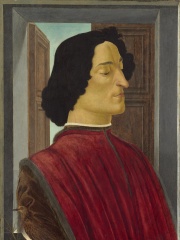
5. Giuliano de' Medici (1453 - 1478)
With an HPI of 75.96, Giuliano de' Medici is the 5th most famous Italian Nobleman. His biography has been translated into 39 different languages.
Giuliano de' Medici (28 October 1453 – 26 April 1478) was the second son of Piero de' Medici (the Gouty) and Lucrezia Tornabuoni. As co-ruler of the Florentine Republic, with his brother Lorenzo the Magnificent, he complemented his brother's image as the "patron of the arts" with his own image as the handsome, sporting "golden boy". He was killed in a plot known as the Pazzi conspiracy in 1478.

6. Francesco I de' Medici, Grand Duke of Tuscany (1541 - 1587)
With an HPI of 75.13, Francesco I de' Medici, Grand Duke of Tuscany is the 6th most famous Italian Nobleman. His biography has been translated into 37 different languages.
Francesco I (25 March 1541 – 19 October 1587) was the second Grand Duke of Tuscany, ruling from 1574 until his death in 1587. He was a member of the House of Medici.

7. Joanna I of Naples (1326 - 1382)
With an HPI of 74.65, Joanna I of Naples is the 7th most famous Italian Nobleman. Her biography has been translated into 39 different languages.
Joanna I, also known as Johanna I (Italian: Giovanna I; December 1325 – 27 July 1382), was Queen of Naples, and Countess of Provence and Forcalquier from 1343 to 1381; she was also Princess of Achaea from 1373 to 1381. Joanna was the eldest daughter of Charles, Duke of Calabria and Marie of Valois to survive infancy. Her father was the son of Robert the Wise, King of Naples, but he died before his father in 1328. Three years later, King Robert appointed Joanna as his heir and ordered his vassals to swear fealty to her. To strengthen Joanna's position, he concluded an agreement with his nephew, King Charles I of Hungary, about the marriage of Charles's younger son, Andrew, and Joanna. Charles I also wanted to secure his uncle's inheritance to Andrew, but King Robert named Joanna as his sole heir on his deathbed in 1343. He also appointed a regency council to govern his realms until Joanna's 21st birthday, but the regents could not actually take control of state administration after the King's death. Joanna's personal life crucially affected the political stability of the Kingdom of Naples (murder of her first husband Andrew in 1345, the invasions of King Louis I of Hungary—justified as avenging the death of his brother—and her three later marriages with Louis of Taranto, James IV, titular King of Majorca and Otto, Duke of Brunswick-Grubenhagen) and undermined her position with the Holy See; moreover afterwards, during the Western Schism, she chose to support the Avignon Papacy against Pope Urban VI, who in retaliation declared her a heretic and usurper on 11 May 1380. With all her children having predeceased her, Joanna's heirs were the descendants of her only surviving sister Maria, whose first marriage with their cousin Charles, Duke of Durazzo was performed without her permission, becoming both spouses in the heads of the political faction against Joanna. Trying to reconcile with the Durazzo branch and with the purpose of securing her succession, Joanna arranged the marriage of her niece Margaret of Durazzo with her first cousin (and Joanna's second cousin) Charles of Durazzo, who eventually captured and imprisoned Joanna, and finally ordered her assassination on 27 July 1382.

8. Ferdinando I de' Medici, Grand Duke of Tuscany (1549 - 1609)
With an HPI of 74.55, Ferdinando I de' Medici, Grand Duke of Tuscany is the 8th most famous Italian Nobleman. His biography has been translated into 39 different languages.
Ferdinando I de' Medici, Grand Duke of Tuscany (30 July 1549 – 17 February 1609) was Grand Duke of Tuscany from 1587 to 1609, having succeeded his older brother Francesco I. He expanded the culture of Tuscany, which included presenting the opera Euridice by Jacopo Peri. Ferdinando supported Henry IV of France following the assassination of Henry III of France and provided him with financial support. He expanded the Naviglio canal and started an irrigation project in the Val di Chiana. Ferdinando died on 17 February 1609.

9. Piero the Unfortunate (1472 - 1503)
With an HPI of 73.81, Piero the Unfortunate is the 9th most famous Italian Nobleman. His biography has been translated into 37 different languages.
Piero di Lorenzo de' Medici (15 February 1472 – 28 December 1503), called Piero the Fatuous or Piero the Unfortunate, was the lord of Florence from 1492 until his exile in 1494.
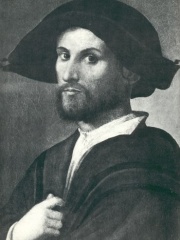
10. Giovanni Borgia, 2nd Duke of Gandia (1474 - 1497)
With an HPI of 73.39, Giovanni Borgia, 2nd Duke of Gandia is the 10th most famous Italian Nobleman. His biography has been translated into 26 different languages.
Giovanni Borgia, 2nd Duke of Gandía (Spanish: Juan de Borja; Catalan: Joan Borja; c. 1476 – 14 June 1497) was the second child of Pope Alexander VI and Vannozza dei Cattanei and a member of the House of Borgia. He was the brother of Cesare, Gioffre, and Lucrezia Borgia. Giovanni Borgia was the pope's favourite son, and Alexander VI granted him important positions and honours. He was murdered in Rome on 14 June 1497. The case remained unsolved and is still considered one of the most notorious scandals of the Borgia era.
People
Pantheon has 108 people classified as Italian noblemen born between 20 BC and 1962. Of these 108, 2 (1.85%) of them are still alive today. The most famous living Italian noblemen include Juan Carlos I of Spain, and Princess Lalla Meryem of Morocco. The most famous deceased Italian noblemen include Lucrezia Borgia, Marie de' Medici, and Ludovico Sforza. As of April 2024, 1 new Italian noblemen have been added to Pantheon including Princess Lalla Meryem of Morocco.
Living Italian Noblemen
Go to all RankingsJuan Carlos I of Spain
1938 - Present
HPI: 84.83
Princess Lalla Meryem of Morocco
1962 - Present
HPI: 56.37
Deceased Italian Noblemen
Go to all RankingsLucrezia Borgia
1480 - 1519
HPI: 82.13
Marie de' Medici
1575 - 1642
HPI: 82.02
Ludovico Sforza
1452 - 1508
HPI: 77.28
Giuliano de' Medici
1453 - 1478
HPI: 75.96
Francesco I de' Medici, Grand Duke of Tuscany
1541 - 1587
HPI: 75.13
Joanna I of Naples
1326 - 1382
HPI: 74.65
Ferdinando I de' Medici, Grand Duke of Tuscany
1549 - 1609
HPI: 74.55
Piero the Unfortunate
1472 - 1503
HPI: 73.81
Giovanni Borgia, 2nd Duke of Gandia
1474 - 1497
HPI: 73.39
Archduke Charles, Duke of Teschen
1771 - 1847
HPI: 73.33
Giovanni di Bicci de' Medici
1360 - 1429
HPI: 72.39
Cosimo II de' Medici, Grand Duke of Tuscany
1590 - 1621
HPI: 72.39
Newly Added Italian Noblemen (2025)
Go to all RankingsOverlapping Lives
Which Noblemen were alive at the same time? This visualization shows the lifespans of the 25 most globally memorable Noblemen since 1700.


